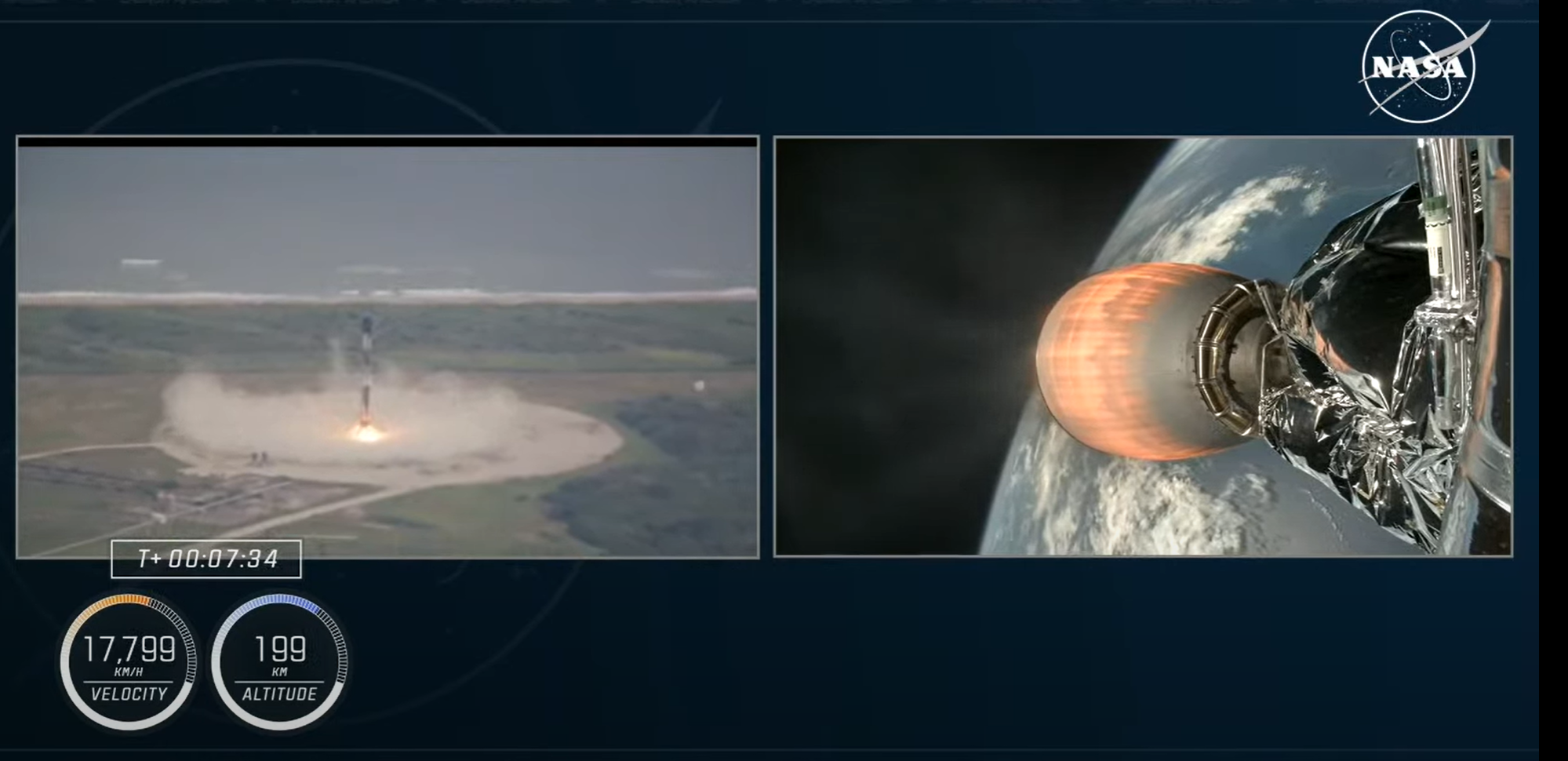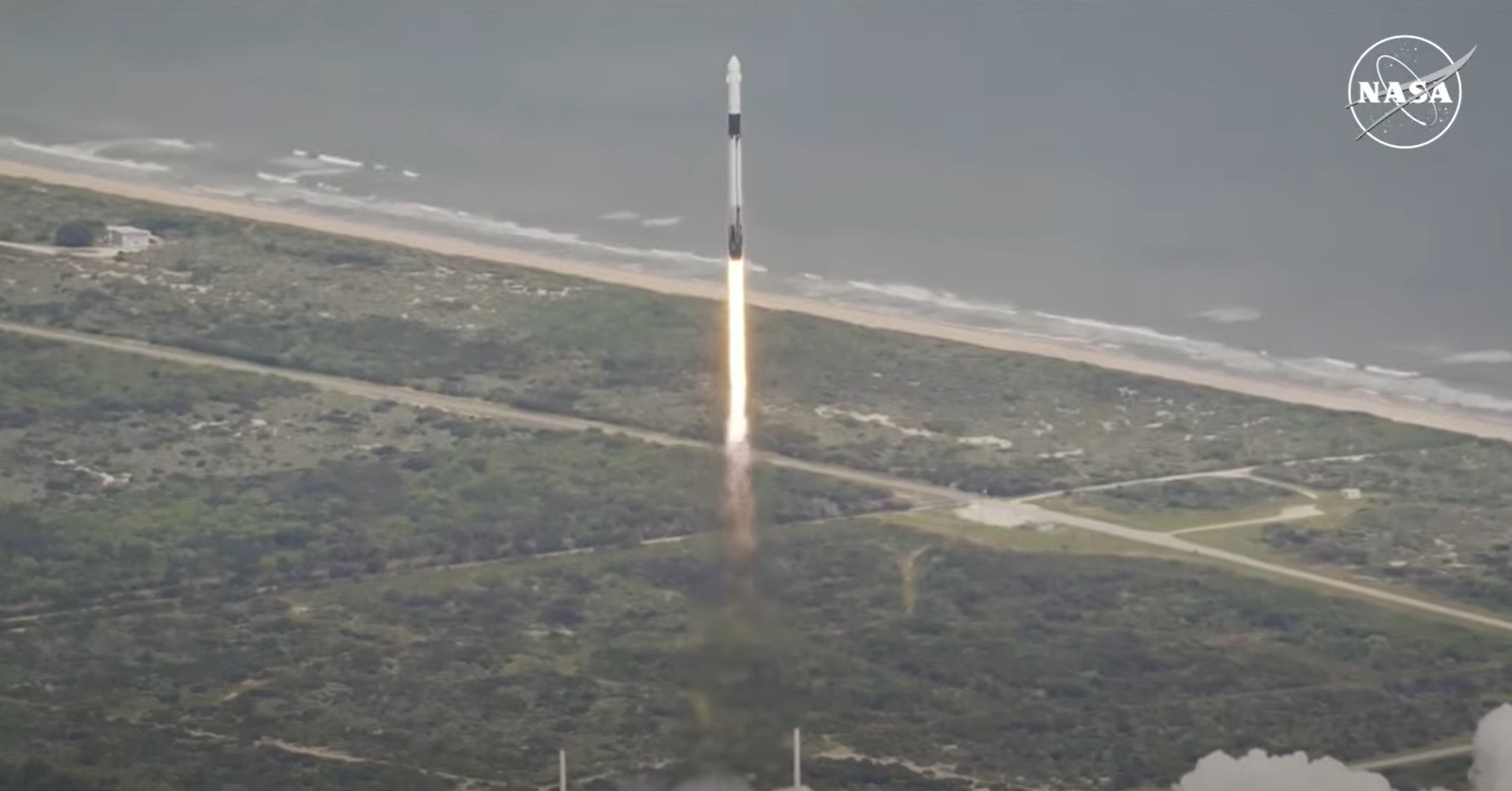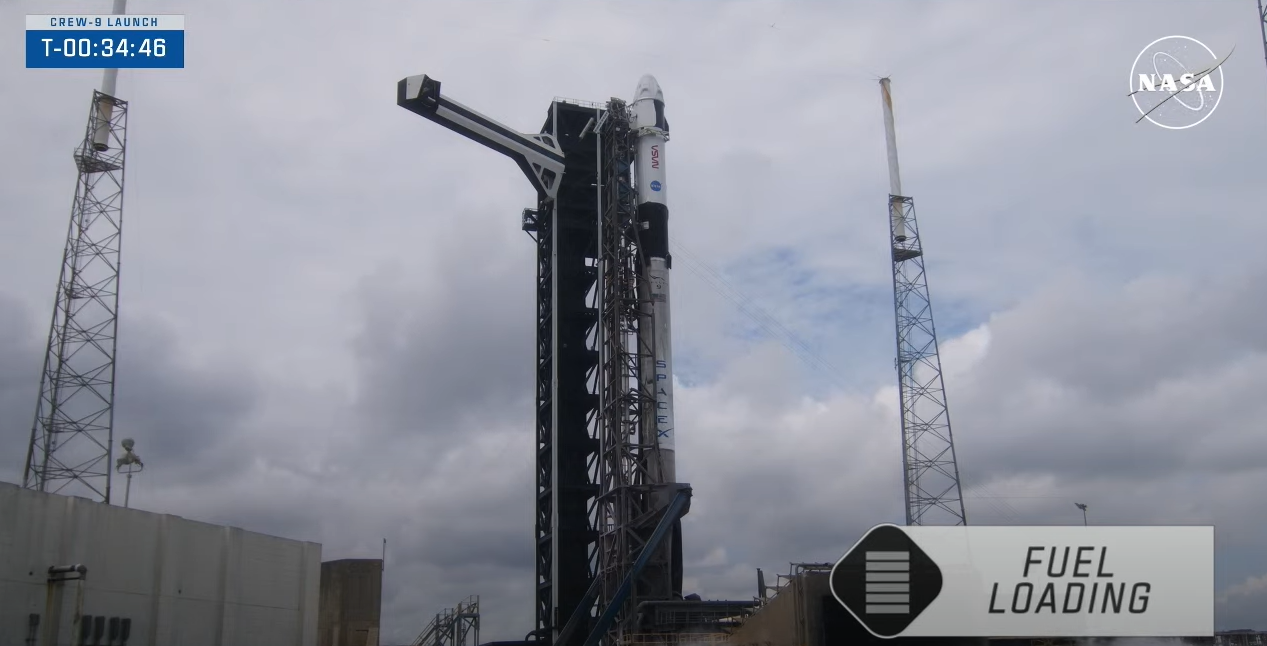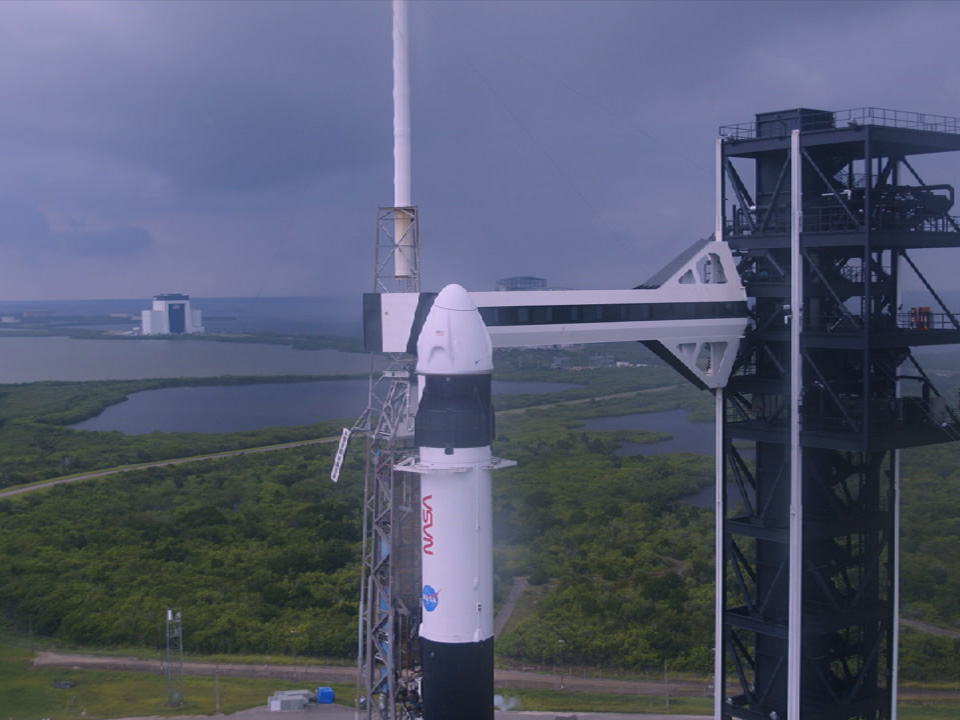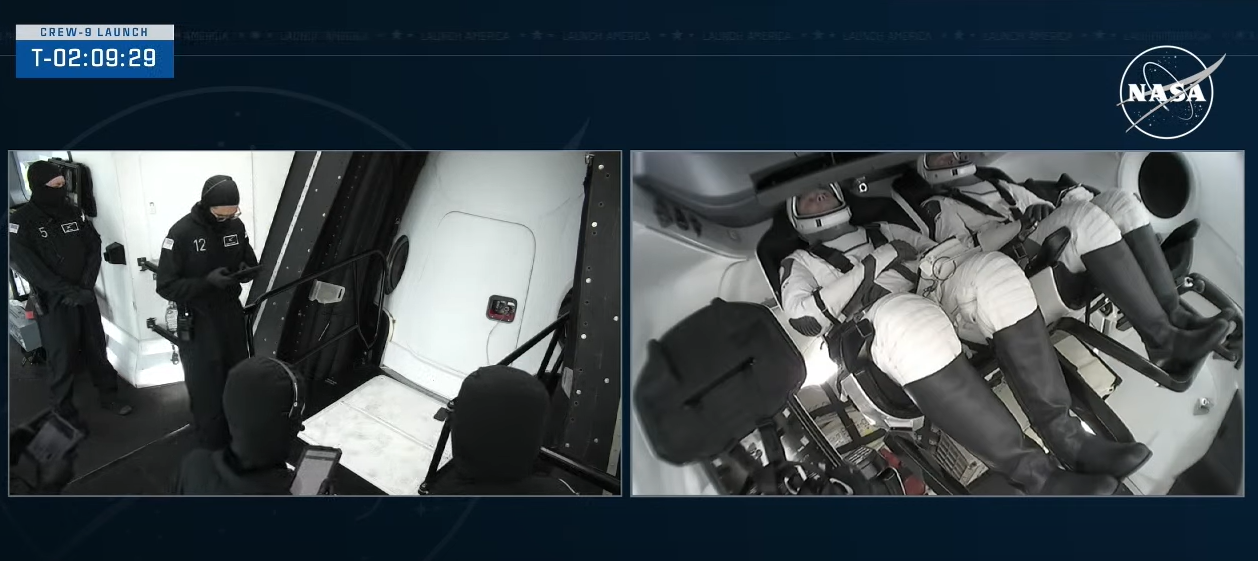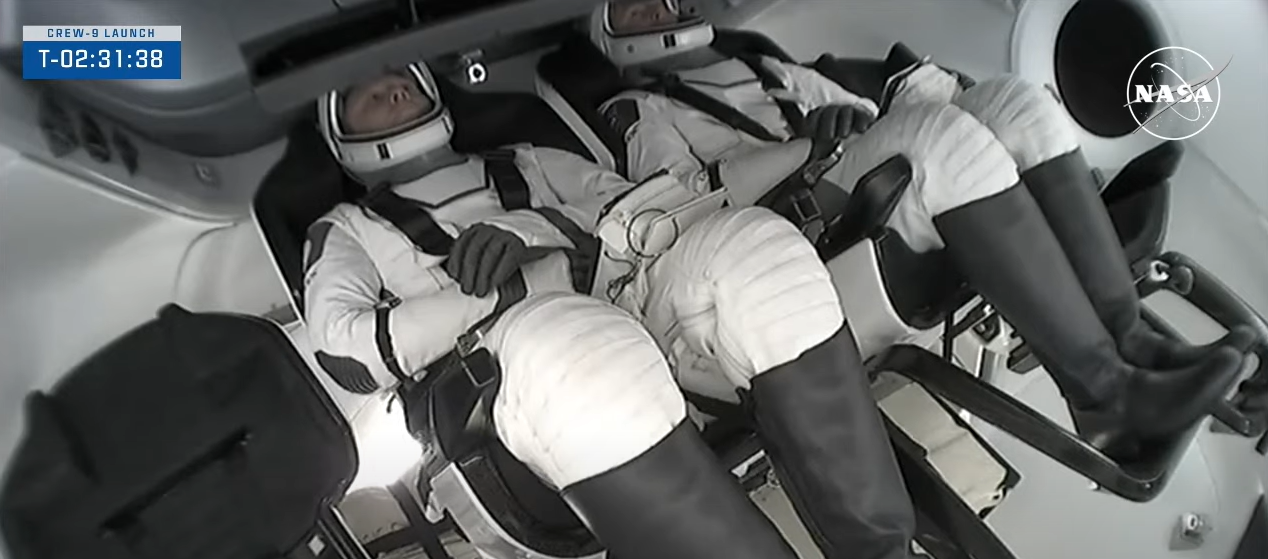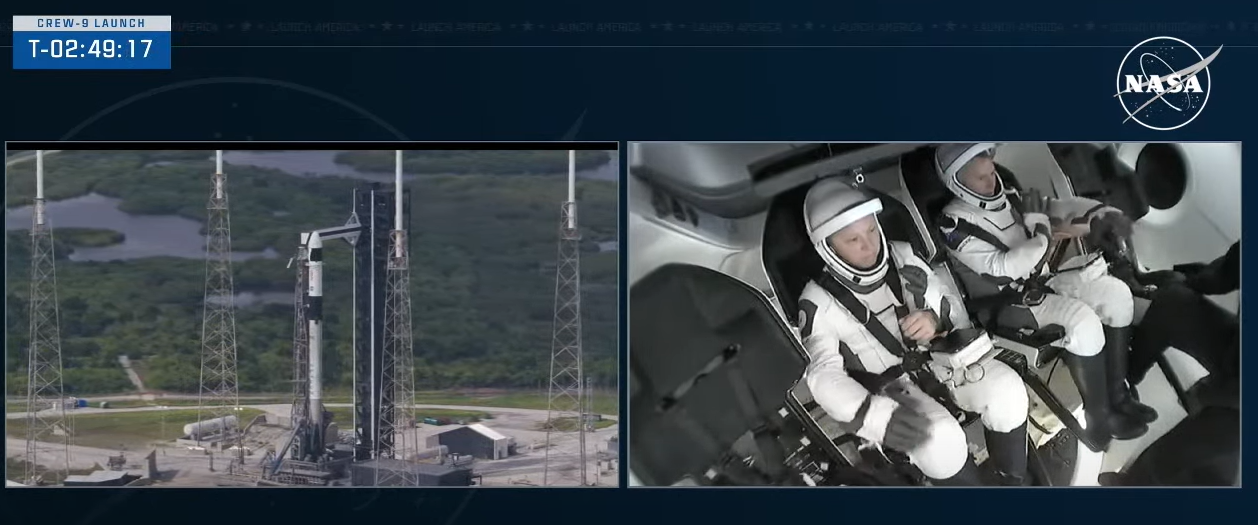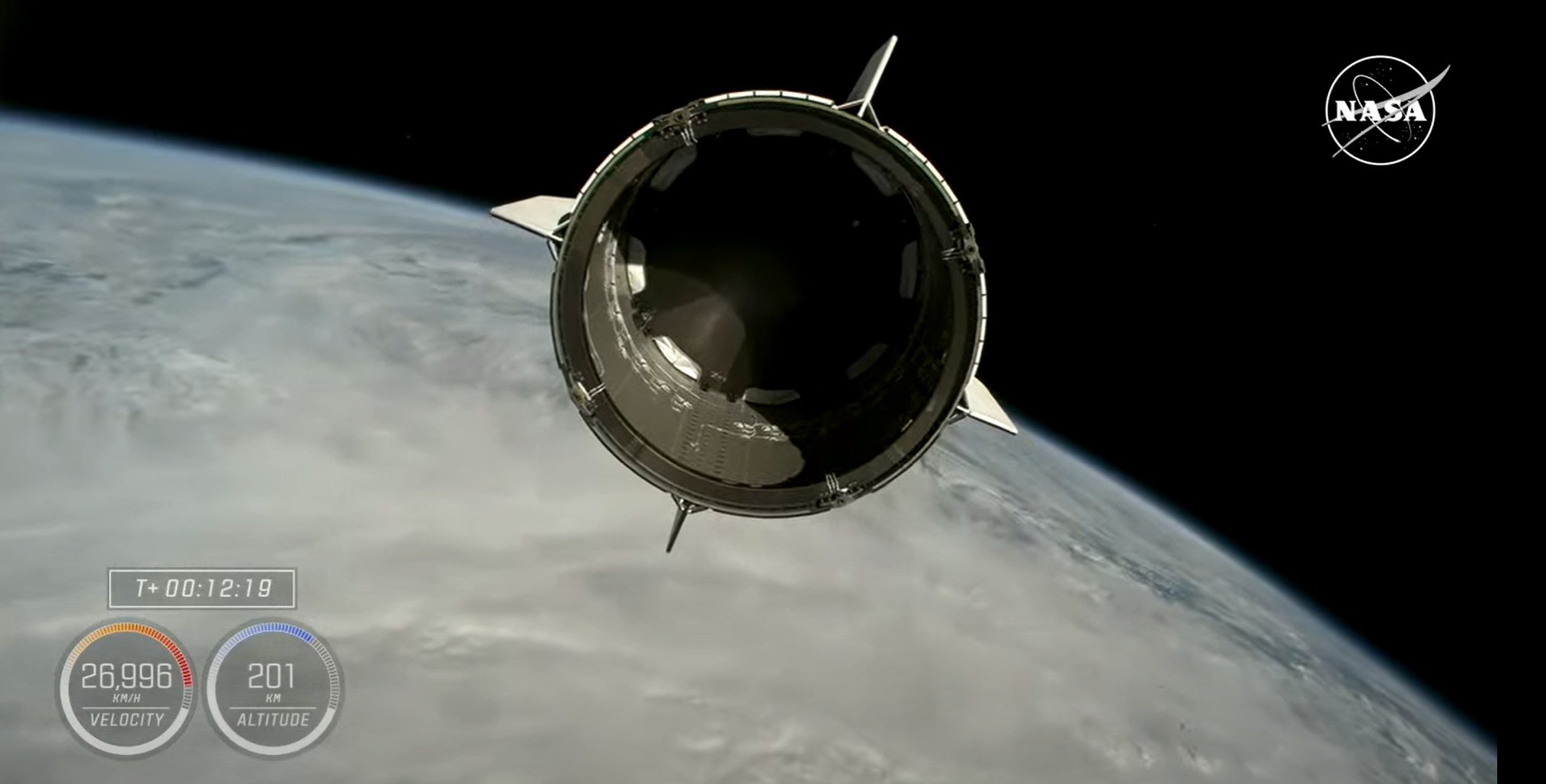
At 1:29 EDT, SpaceX’s Dragon spacecraft separated from the Falcon 9 rocket second stage and now is flying on its own.
NASA astronaut Nick Hague, commander, and Roscosmos cosmonaut Aleksandr Gorbunov, mission specialist, are on a 28.5-hour journey to the International Space Station. The spacecraft now is in orbit and will autonomously dock to the Harmony module’s forward port. Soon, the crew will open their visors and get out of their suits during the ride.
Once Hague and Gorbunov reach the orbiting laboratory, they will be greeted by nine members of the Expedition 72 crew. There will be a brief overlap period before NASA’s SpaceX Crew-8 members, NASA astronauts Matthew Dominick, Mike Barratt, and Jeanette Epps, as well as Roscosmos cosmonaut Alexander Grebenkin return to Earth. The four-person crew has been at the orbiting laboratory since March 5, when they docked to the orbital outpost aboard the SpaceX Dragon Endeavour spacecraft.
Check back for updates on the mission blog, @commercial_crew on X, or commercial crew on Facebook.

